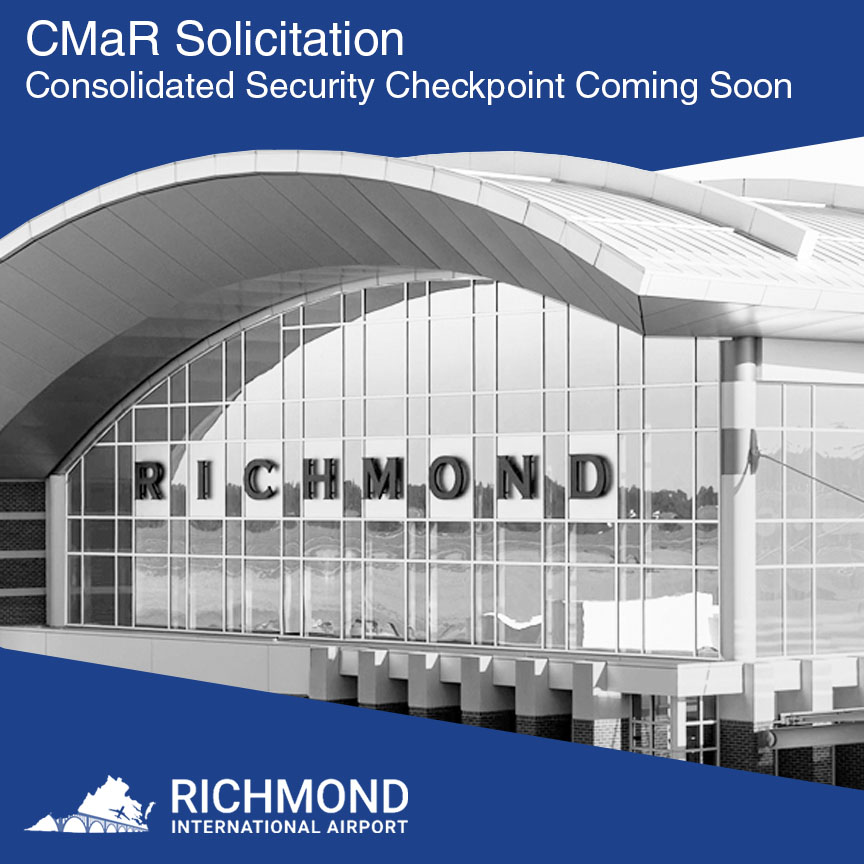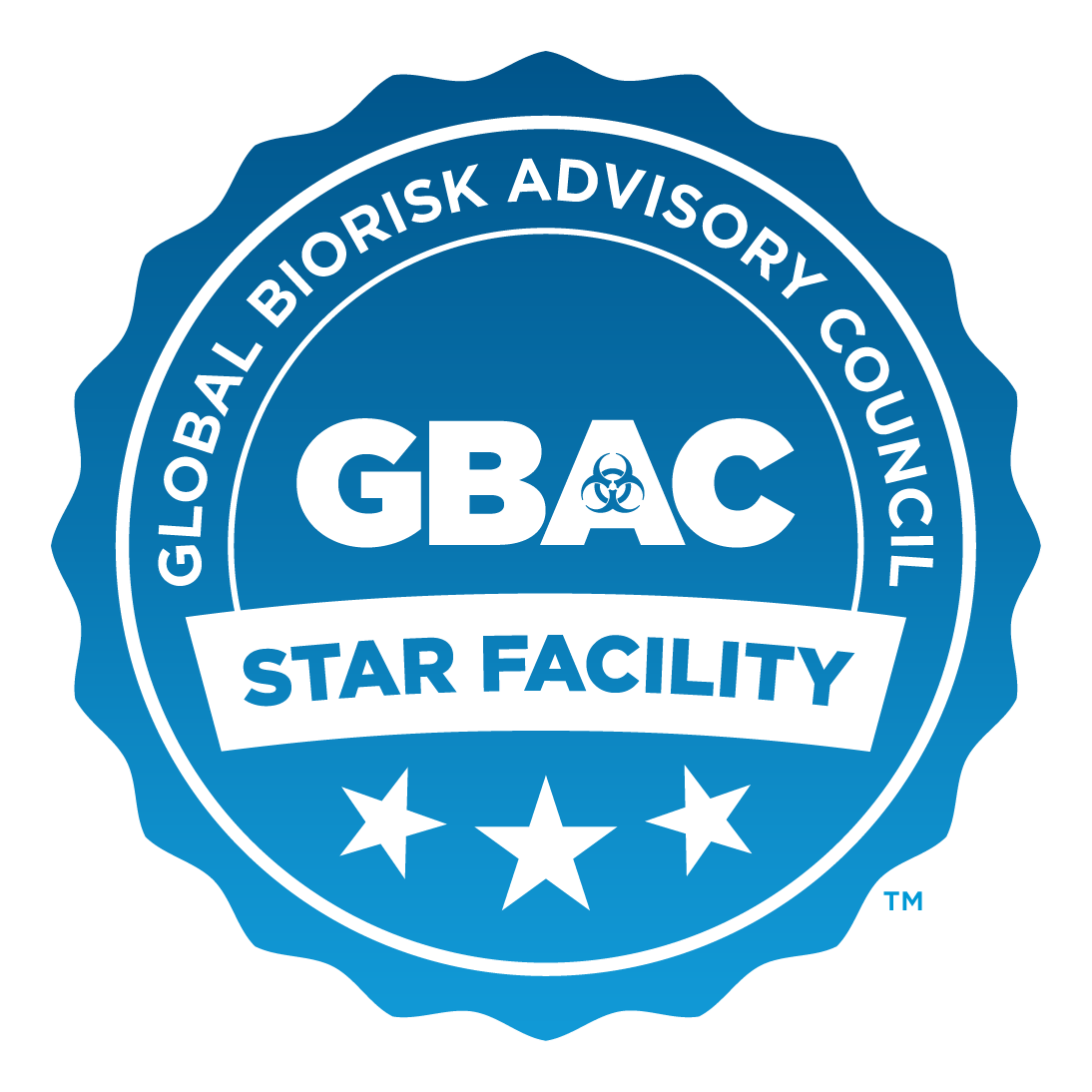CMAR RFQ Solicitation for Consolidated Security Screening Checkpoint Project Coming Soon
Oct 1, 2025

RICHMOND, Va., October 1, 2025 – Later this year, the Capital Region Airport Commission will post a Request for Qualifications (RFQ) solicitation for the Consolidated Security Screening Checkpoint (CSSCP) project at Richmond International Airport (RIC).
“The Consolidated Security Screening Checkpoint is among the most transformative projects in RIC’s history,” said Perry J. Miller, Ph.D., A.A.E., I.A.P., president and CEO of the Capital Region Airport Commission. “As we continue to grow, enhancing the customer experience with a streamlined, efficient checkpoint is one of our highest priorities. This project will not only improve security and convenience for travelers, but also create the foundation for future improvements across the airport.”
The CSSCP will merge two separate checkpoints into one central location with the potential to expand to 14 lanes. It will streamline the passenger experience, create space for new concessions, improve circulation between concourses, and even allow for an airport lounge. It is also the first project at RIC to use the Construction Manager at Risk (CMAR) delivery method, which gives the airport more flexibility and oversight.
Notice to Potential Bidders
What should potential bidders be looking for? In December, interested parties should watch for a CMAR Request for Qualifications (RFQ) for the Consolidated Security Screening Checkpoint project from the Capital Region Airport Commission on Virginia’s eProcurement Marketplace, eVA.
Project Description:
The project involves the consolidation of the two existing security checkpoints into a single, centralized checkpoint facility. By merging these two operations into one streamlined location, the airport aims to significantly improve passenger flow, enhance security screening efficiency, and create a more customer-friendly experience.
Strategically located between the existing landside atrium and the ticketing hall, the new CSSCP will serve as a central gateway for passengers as they transition from the public areas of the terminal into the post-security side. This placement strengthens connectivity, provides intuitive wayfinding, and ensures efficient circulation for both departing and arriving travelers.
Designed to accommodate up to ten (10) security screening lanes at opening, with the infrastructure and design capacity to expand to a total of fourteen (14) lanes in the future, the built-in flexibility of the CSSCP enables the airport to meet current passenger demand while safeguarding long-term growth potential and evolving operational needs.
The overall project represents more than 100,000 square feet of construction, underscoring its scale and significance as a transformative investment in the airport’s infrastructure. Beyond security functions, the design encompasses a series of key passenger and staff amenities. On the second floor, the facility will include new landside and airside restrooms sized to accommodate high passenger volumes, as well as dedicated vertical circulation elements for efficient transitions between levels.
A designated “meet and greet” area will provide a welcoming zone for visitors, while concessions will be strategically integrated to enhance passenger comfort and provide concessions to meters and greeters. Additional support spaces on the second level will bolster both passenger services and operational needs.
The first floor will be dedicated primarily to back-of-house and support functions essential to daily airport operations. This will include administrative offices for commission staff, general support areas, and a full-service cafeteria to serve airport-based employees. Locating these critical spaces at ground level optimizes efficiency and ensures that the second floor remains focused on passenger-facing functions.
In summary, this project will create a more seamless, intuitive, and efficient experience for both passengers and staff. By consolidating and relocating the SSCP, the project not only enhances security operations but also reinforces the terminal’s role as a modern, passenger-focused gateway capable of supporting future growth and evolving industry standards.
About Richmond International Airport (RIC)
Richmond International Airport’s vision is to move people, business, and commerce to advance the Richmond region. Eleven passenger airlines and four dedicated cargo carriers offer service from RIC with connecting options to points around the globe. According to the Commonwealth of Virginia, activities attributable to the Airport create nearly 16,000 jobs and contribute about $2.1 billion in annual economic activity to Virginia’s Capital Region. To learn more, please visit RIC on the web, X, Facebook, Instagram, Threads, or LinkedIn.
Contacts:
Troy M. Bell, C.M.
Director – Air Service Dev. & Corporate Communications
tbell@flyrichmond.com
Nagesh Tummala, C.M., ACE
Director – Capital Development
ntummala@flyrichmond.com
###


